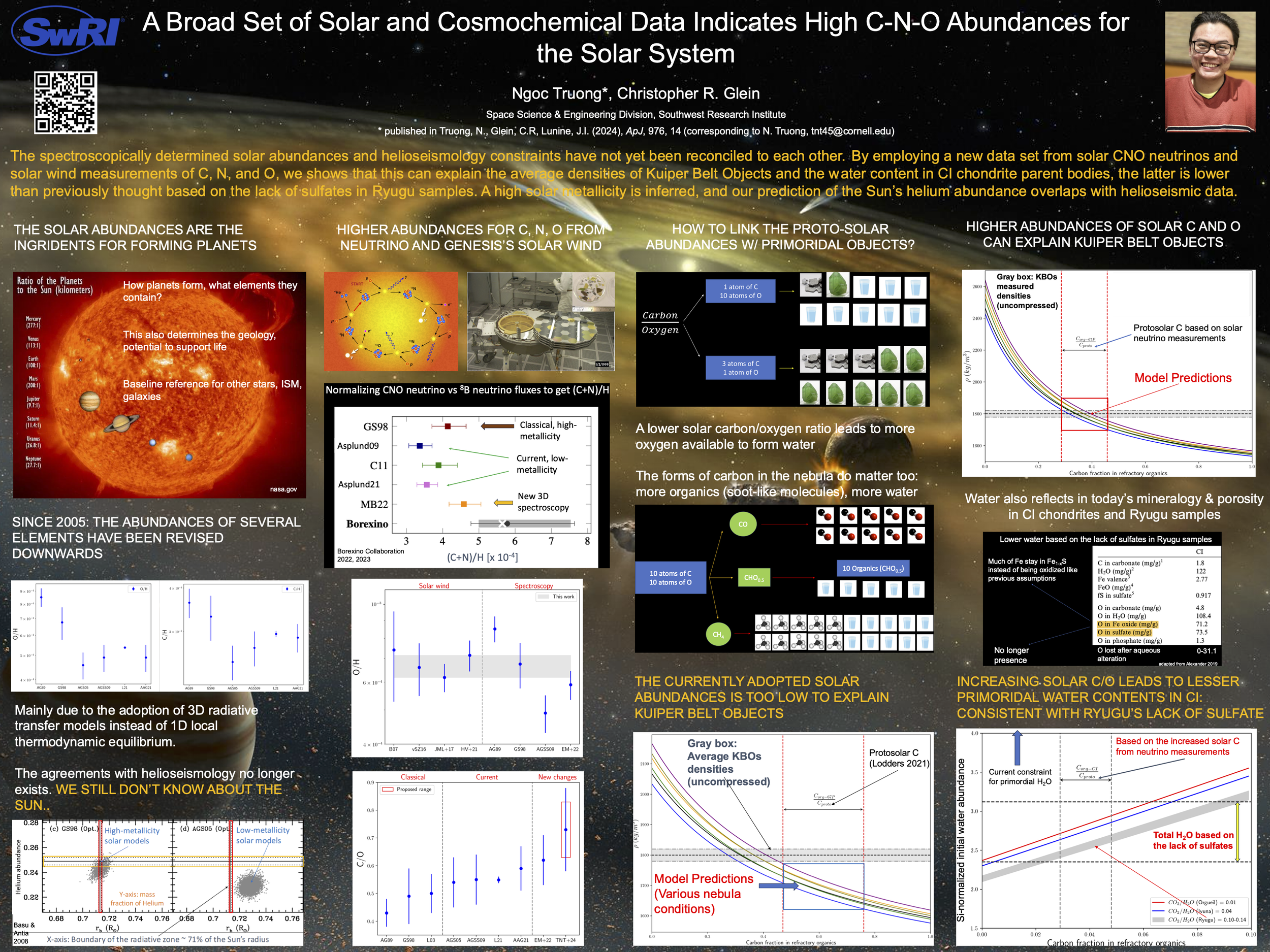Origins, Evolution and Habitability
Over the past decades, two new paradigms have emerged in our understanding of the composition of the Sun and small bodies in the outer solar system — the leftover building blocks of planet formation. This paints a new picture of the proto-solar nebula — the cloud of gases and dusts that formed around the Sun 4.56 billion years ago and eventually gave birth to the planets, moons, and all of us!
Beyond the snow-line: icy or rocky?
However, alongside ice, other refractory components—such as rock and refractory organics (soot-like molecules)—are also prevalent. Take Pluto, regardless of whether you consider it a planet, it actually contains more rocky material than ice. In fact, if we do a simple exercise taking the average densities of known Kuiper Belt Objects (KBOs), the numbers suggest a typical composition of about 70% rock, 30% ice (e.g., Bierson & Nimmo, 2019; Noviello et al., 2022).
The snow line marks the boundary between the inner and outer solar system—beyond this point, the temperature in the protosolar nebula dropped low enough for water (and other volatiles) to condense into ice. It’s no surprise, then, that objects forming in the outer solar system contain abundant water ice.
Although objects beyond the orbit of Neptune contain abundant water ice, the Kuiper Belt as a whole is rock-rich on average. In fact, it contains more rock than the commonly assumed equal proportion of rock and ice in outer solar system materials. The same trend holds true for other primordial outer solar system materials, such as Ivuna-type carbonaceous chondrites (CI).
Data from returned samples, such as Ryugu, suggest that the presence of sulfates in meteorites found on Earth is due to terrestrial contamination. This implies that the amount of primordial water in their parent bodies is lower than previously thought (Truong et al. 2024).
It's the carbon-to-oxygen ratio in the protosolar nebula that controls how much water is available.
Once the thermodynamic and kinetic conditions are met, water vapor can indeed condense into ice. However, if carbon is much more abundant, molecules like CO can sequester free oxygen, limiting the amount available to form water. This is not what we see in our solar system. On the other hand, bodies such as KBOs would be mostly full of water ice, if oxygen is much more abundant. This is not what see in our solar system either. Of course, we need to be more quantitative than this!
New advancement in understanding the Sun’s composition







